Structural Characterization, Rheology, Texture, and Potential Hypoglycemic Effect of Polysaccharides from Brasenia schreberi
Abstract
1. Introduction
2. Materials and Methods
2.1. Materials
2.2. Sample Preparation
2.3. Microstructure Analysis
2.4. Molecular Weight Analysis
2.5. Monosaccharide Composition Analysis
2.6. Partial Acid Hydrolysis
2.7. FT-IR and Methylation Analysis
2.8. Methylation Analysis
2.9. NMR Spectroscopy Analysis
2.10. Rheological Properties and Texture Analysis
2.10.1. Steady Rheological Properties
2.10.2. Dynamic Rheological Properties
2.11. Hypoglycemic Activity
2.11.1. α-Amylase Inhibition Activity
2.11.2. α-Glucosidase Inhibitory Activity
2.12. Statistical Analysis
3. Results and Discussion
3.1. Microstructure Analysis
3.2. Molecular Weight and Monosaccharide Composition Analysis
3.3. FT-IR Analysis
3.4. Partial Acid Hydrolysis
3.5. Methylation Analysis
3.6. NMR Spectroscopy Analysis
3.7. Rheological Properties
3.7.1. Steady Rheological Properties
3.7.2. Dynamic Rheological Properties
3.8. Textural Properties
3.9. Hypoglycemic Activity
4. Discussion
5. Conclusions
Supplementary Materials
Author Contributions
Funding
Institutional Review Board Statement
Informed Consent Statement
Data Availability Statement
Conflicts of Interest
References
- Kim, H.; Wang, Q.; Shoemaker, C.F.; Zhong, F.; Bartley, G.E.; Yokoyama, W.H. Polysaccharide gel coating of the leaves of Brasenia schreberi lowers plasma cholesterol in hamsters. J. Trad. Compl. Med. 2015, 5, 56–61. [Google Scholar] [CrossRef]
- Kakuta, M.; Misaki, A. The polysaccharide of “Junsai (Brasenia schreberi J. F. Gmel)” Mucilage; Fragmentation Analysis by Successive Smith Degradations and Partial Acid Hydrolysis. Agric. Biol. Chem. 1979, 43, 1269–1276. [Google Scholar] [CrossRef][Green Version]
- Elakovich, S.D.; Wooten, J.W. An examination of the phytotoxicity of the water shield, Brasenia schreberi. J. Chem. Ecol. 1987, 13, 1935–1940. [Google Scholar] [CrossRef] [PubMed]
- Liu, P.X.; Liu, Y.H.; Yang, Y.; Chen, Z.; Li, J.J.; Luo, J.B. Mechanism of biological liquid superlubricity of Brasenia schreberi mucilage. Langmuir 2014, 30, 3811–3816. [Google Scholar] [CrossRef]
- Wang, Y.J.; Zou, Y.; Fang, Q.; Feng, R.Z.; Zhang, J.H.; Zhou, W.H.; Wei, Q. Polysaccharides from Brasenia schreberi with great antioxidant ability and the potential application in yogurt. Molecules 2023, 29, 150. [Google Scholar] [CrossRef]
- Xiao, H.W.; Cai, X.R.; Fan, Y.J.; Luo, A.X. Antioxidant activity of water-soluble polysaccharides from Brasenia schreberi. Pharmacogn. Mag. 2016, 12, 193–197. [Google Scholar] [CrossRef] [PubMed]
- Wan, J.W.; Yu, X.J.; Liu, J.; Li, J.; Ai, T.Y.; Yin, C.; Liu, H.; Qin, R. A special polysaccharide hydrogel coated on Brasenia schreberi: Preventive effects against ulcerative colitis via modulation of gut microbiota. Food Funct. 2023, 14, 3564–3575. [Google Scholar] [CrossRef]
- Chen, J.C.; Li, L.; Zhou, X.; Sun, P.Y.; Li, B. Preliminary characterization and antioxidant and hypoglycemic activities in vivo of polysaccharides from Huidouba. Food Funct. 2018, 9, 6337–6348. [Google Scholar] [CrossRef]
- Ma, C.L.; Bai, J.W.; Shao, C.T.; Liu, J.W.; Zhang, Y.; Li, X.Q.; Yang, Y.; Xu, Y.Q.; Wang, L.B. Degradation of blue honeysuckle polysaccharides, structural characteristics and antiglycation and hypoglycemic activities of degraded products. Food Res. Int. 2021, 143, 110281. [Google Scholar] [CrossRef]
- Luo, H.Q.; Ying, N.; Zhao, Q.H.; Chen, J.L.; Xu, H.Y.; Jiang, W.; Wu, Y.Z.; Wu, Y.L.; Gao, H.C.; Zheng, H. A novel polysaccharide from Rubus chingii Hu unripe fruits: Extraction optimization, structural characterization and amelioration of colonic inflammation and oxidative stress. Food Chem. 2023, 421, 136152. [Google Scholar] [CrossRef]
- Bai, L.L.; Zhu, P.L.; Wang, W.B.; Wang, M.C. The influence of extraction pH on the chemical compositions, macromolecular characteristics, and rheological properties of polysaccharide: The case of okra polysaccharide. Food Hydrocoll. 2020, 102, 105586. [Google Scholar] [CrossRef]
- Shen, C.; Wang, T.; Guo, F.; Sun, K.L.; Chen, Y. Structural characterization and intestinal protection activity of polysaccharides from sea buckthorn (hippophae rhamnoides L.) berries. Carbohydr. Polym. 2021, 274, 118648. [Google Scholar] [CrossRef] [PubMed]
- Wang, Q.L.; Wang, J.H.; Li, M.X.; Liu, Y.; Gao, L. Structural characterization and antioxidant activity of polysaccharide hvp-1 from Volvariella volvacea. Int. J. Biol. Macromol. Struct. Funct. Interact. 2024, 260, 129672. [Google Scholar] [CrossRef]
- He, W.T.; Sun, H.H.; Su, L.J.; Zhou, D.J.; Zhang, X.; Deng, S.G.; Chen, Y. Structure and anticoagulant activity of a sulfated fucan from the sea cucumber Acaudina leucoprocta. Int. J. Biol. Macromol. 2020, 164, 87–94. [Google Scholar] [CrossRef]
- Lin, Y.Y.; Pi, J.J.; Jin, P.Y.; Liu, Y.T.; Mai, X.M.; Li, P.F.; Fan, H.J. Enzyme and microwave co-assisted extraction, structural characterization and antioxidant activity of polysaccharides from Purple-heart Radish. Food Chem. 2021, 372, 131274. [Google Scholar] [CrossRef]
- Chen, Y.; Wang, T.; Zhang, X.; Zhang, F.M.; Linhardt, R.J. Structural and immunological studies on the polysaccharide from spores of a medicinal entomogenous fungus Paecilomyces cicadae. Carbohydr. Polym. 2021, 254, 117462. [Google Scholar] [CrossRef]
- Wang, T.; Shen, C.; Guo, F.; Zhao, Y.J.; Wang, J.; Sun, K.L.; Wang, B.; Chen, Y.; Chen, Y. Characterization of a polysaccharide from the medicinal lichen, Usnea longissima, and its immunostimulating effect in vivo. Int. J. Biol. Macromol. 2021, 181, 672–682. [Google Scholar] [CrossRef]
- Yin, J.Y.; Nie, S.P.; Li, J.; Li, C.; Cui, S.W.; Xie, M.Y. Mechanism of interactions between calcium and viscous polysaccharide from the seeds of Plantago asiatica L. J. Agric. Food Chem. 2012, 60, 7981–7987. [Google Scholar] [CrossRef]
- Yin, J.Y.; Nie, S.P.; Guo, Q.B.; Wang, Q.; Cui, S.W.; Xie, M.Y. Effect of calcium on solution and conformational characteristics of polysaccharide from seeds of Plantago asiatica L. Carbohydr. Polym. 2015, 124, 331–336. [Google Scholar] [CrossRef]
- Yin, J.Y.; Chen, H.H.; Lin, H.X.; Xie, M.Y.; Nie, S.P. Structural features of alkaline extracted polysaccharide from the seeds of Plantago asiatica L. and its rheological properties. Molecules 2016, 21, 1181. [Google Scholar] [CrossRef]
- Wang, H.L.; Rao, P.F.; Xie, Z.D.; Jiang, J.H.; Qiu, Y.J.; Zhang, Z.W.; Li, G.Q.; Xiang, L.W. Exploring the interaction between Lycium barbarum polysaccharide and gelatin: Insights into gelation behaviors, water mobility, and structural changes. Food Hydrocoll. 2023, 148, 109415. [Google Scholar] [CrossRef]
- Chen, Y.Y.; Huang, J.B.; Chen, J.; Zhao, Y.D.; Deng, S.G.; Yang, H.L. Gelatinous quality and quantitative proteomic analyses of snakehead (Channa argus) surimi treated by atmospheric cold plasma. Food Chem. 2024, 459, 140412. [Google Scholar] [CrossRef]
- Ma, S.P.; Zhu, P.L.; Wang, M.C. Effects of konjac glucomannan on pasting and rheological properties of corn starch. Food Hydrocoll. 2019, 89, 234–240. [Google Scholar] [CrossRef]
- Fang, F. Shear-induced synergistic effects of konjac glucomannan and waxy potato starch on viscosity and gel strength. Food Hydrocoll. 2021, 114, 106540. [Google Scholar] [CrossRef]
- Lv, Q.Q.; Cao, J.J.; Liu, R.; Chen, H.Q. Structural characterization, α-amylase and α-glucosidase inhibitory activities of polysaccharides from wheat bran. Food Chem. 2021, 341, 128218. [Google Scholar] [CrossRef]
- Wang, C.; Yu, Y.B.; Chen, T.T.; Wang, Z.W.; Yan, J.K. Innovative preparation, physicochemical characteristics and functional properties of bioactive polysaccharides from fresh okra (Abelmoschus esculentus (L.) Moench). Food Chem. 2020, 320, 126647. [Google Scholar] [CrossRef] [PubMed]
- Ai, T.Y.; Wan, J.W.; Yu, X.J.; Liu, J.; Yin, C.; Yang, L.D.; Liu, H.; Qin, R. The non-denatured processing of Brasenia schreberi mucilage—Characteristics of hydrodynamic properties and the effect on in vivo functions. Foods 2024, 13, 1824. [Google Scholar] [CrossRef]
- Ji, X.; Zhang, F.; Zhang, R.; Liu, F.; Peng, Q.; Wang, M. An acidic polysaccharide from Ziziphus Jujuba cv. Muzao: Purification and structural characterization. Food Chem. 2019, 274, 494–499. [Google Scholar] [CrossRef]
- Zhang, H.; Yue, Y.; Zhang, Q.; Liang, L.; Li, C.; Chen, Y.; Li, W.; Peng, M.; Yang, M.; Zhao, M.; et al. Structural characterization and anti-inflammatory effects of an arabinan isolated from Rehmannia glutinosa Libosch. Carbohydr. Polym. 2023, 303, 120441. [Google Scholar] [CrossRef]
- Cheng, H.; Xu, L.; Zhu, H.; Bu, T.T.; Li, Z.H.; Zhao, S.N.; Yang, K.; Sun, P.L.; Cai, M. Structural characterization of oligosaccharide from Dendrobium officinale and its properties in vitro digestion and fecal fermentation. Food Chem. 2024, 460, 140511. [Google Scholar] [CrossRef]
- Zhou, L.Q.; Ding, X.; Hou, Y. The structure characterization and biological activities of new polysaccharides from Armillariella tabescens (AT-P) and Tricholoma portentosum (TP-P). J. Food Meas. Charact. 2024, 18, 4620–4633. [Google Scholar] [CrossRef]
- Qi, J.R.; Zhang, J.; Wang, K.; Cheng, Y.F.; Sheng, Q.L.; Kurtovic, I.; Yuan, Y.H.; Yue, T.L. Tibetan kefir grains fermentation alters physicochemical properties and improves antioxidant activities of Lycium barbarum pulp polysaccharides. Food Chem. 2024, 453, 139659. [Google Scholar] [CrossRef] [PubMed]
- Ghamgui, H.; Jarboui, R.; Jeddou, K.B.; Torchi, A.; Siala, M.; Cherif, S.; Trigui, M. Polysaccharide from Thymelaea hirsuta L. leaves structural characterization, functional properties and antioxidant evaluation. Int. J. Biol. Macromol. 2024, 262, 129244. [Google Scholar] [CrossRef]
- Jia, W.; Wang, W.H.; Yu, D.S.; Yu, Y.C.; Feng, Z.; Li, H.W.; Zhang, J.S.; Zhang, H.N. Structural elucidation of a polysaccharide from Flammulina velutipes and its lipid-lowering and immunomodulation activities. Polymers 2024, 16, 598. [Google Scholar] [CrossRef] [PubMed]
- Zhu, Y.L.; Wu, S.T.; Guo, F.; Dong, Z.; Chen, Y.; Chen, Y. Structural characteristics of sulfated xylogalactomannan isolated from Caulerpa okamurae and its anticoagulant activity. Int. J. Biol. Macromol. 2024, 275, 133743. [Google Scholar] [CrossRef]
- Gao, X.; Qu, H.; Shan, S.; Song, C.; Baranenko, D.; Li, Y.Z.; Lu, W.H. A novel polysaccharide isolated from Ulva pertusa: Structure and physicochemical property. Carbohydr. Polym. 2020, 233, 115849. [Google Scholar] [CrossRef]
- Fontana, C.; Widmalm, G. Primary structure of glycans by NMR spectroscopy. Chem. Rev. 2023, 123, 1040–1102. [Google Scholar] [CrossRef]
- Yao, H.M.; Wang, J.Q.; Yin, J.Y.; Nie, S.P.; Xie, M.Y. A review of NMR analysis in polysaccharide structure and conformation: Progress, challenge and perspective. Food Res. Int. 2021, 143, 110290. [Google Scholar] [CrossRef]
- Chen, Y.Q.; Liu, Y.Y.; Sarker, M.M.; Yan, X.; Yang, C.F.; Zhao, L.N.; Lv, X.C.; Liu, B.; Zhao, C. Structural characterization and antidiabetic potential of a novel heteropolysaccharide from Grifola frondosa via IRS1/PI3K-JNK signaling pathways. Carbohydr. Polym. 2018, 198, 452–461. [Google Scholar] [CrossRef]
- Hao, H.L.; Han, Y.; Yang, L.H.; Hu, L.M.; Duan, X.W.; Yang, X.; Huang, R.M. Structural characterization and immunostimulatory activity of a novel polysaccharide from green alga Caulerpa racemosa var peltata. Int. J. Biol. Macromol. 2019, 134, 891–900. [Google Scholar] [CrossRef]
- Ye, Z.Q.; Li, T.Y.; Qing, D.G.; Sun, Y.; Chen, H.Y.; Yu, Q.; Yan, C.Y. Structural elucidation and osteogenic activity of a novel heteropolysaccharide from Alhagi pseudalhagi. Int. J. Biol. Macromol. 2021, 171, 185–197. [Google Scholar] [CrossRef] [PubMed]
- Wang, W.J.; Jiang, L.; Ren, Y.M.; Shen, M.Y.; Xie, J.H. Gelling mechanism and interactions of polysaccharides from Mesona blumes: Role of urea and calcium ions. Carbohydr. Polym. 2019, 212, 270–276. [Google Scholar] [CrossRef]
- Xu, G.Y.; Liao, A.M.; Huang, J.H.; Zhang, J.G.; Thakur, K.; Wei, Z.J. The rheological properties of differentially extracted polysaccharides from potatoes peels. Int. J. Biol. Macromol. 2019, 137, 1–7. [Google Scholar] [CrossRef] [PubMed]
- Rong, L.Y.; Shen, M.Y.; Wen, H.L.; Xiao, W.H.; Li, J.W.; Xie, J.H. Effects of xanthan, guar and mesona chinensis benth gums on the pasting, rheological, texture properties and microstructure of pea starch gels. Food Hydrocoll. 2022, 125, 107391. [Google Scholar] [CrossRef]
- Teng, W.X.; Yang, Z.Q.; Nan, W.; Tian, J.; Pu, Z.M.; He, X.Y.; Wu, C.H. Modulating the textural and structural characteristics of curdlan-potato protein gel with different concentrations. Food Hydrocoll. 2024, 149, 109638. [Google Scholar] [CrossRef]
- Feng, S.M.; Luan, D.; Ning, K.; Shao, P.; Sun, P.L. Ultrafiltration isolation, hypoglycemic activity analysis and structural characterization of polysaccharides from Brasenia schreberi. Int. J. Biol. Macromol. 2019, 135, 141–151. [Google Scholar] [CrossRef]
- Liu, G.D.; Feng, S.M.; Yan, J.D.; Luan, D.; Sun, P.L.; Shao, P. Antidiabetic potential of polysaccharides from Brasenia schreberi regulating insulin signaling pathway and gut microbiota in type 2 diabetic mice. Curr. Res. Food Sci. 2022, 5, 1465–1474. [Google Scholar] [CrossRef]
- Xue, H.K.; Hao, Z.T.; Gao, Y.C.; Cai, X.; Tang, J.T.; Liao, X.J.; Tan, J.Q. Research progress on the hypoglycemic activity and mechanisms of natural polysaccharides. Int. J. Biol. Macromol. 2023, 252, 16. [Google Scholar] [CrossRef]
- Ji, X.L.; Guo, J.H.; Cao, T.Z.; Zhang, T.T.; Liu, Y.Q.; Yan, Y.Z. Review on mechanisms and structure-activity relationship of hypoglycemic effects of polysaccharides from natural resources. Food Sci. Hum. Well. 2023, 12, 1969–1980. [Google Scholar] [CrossRef]
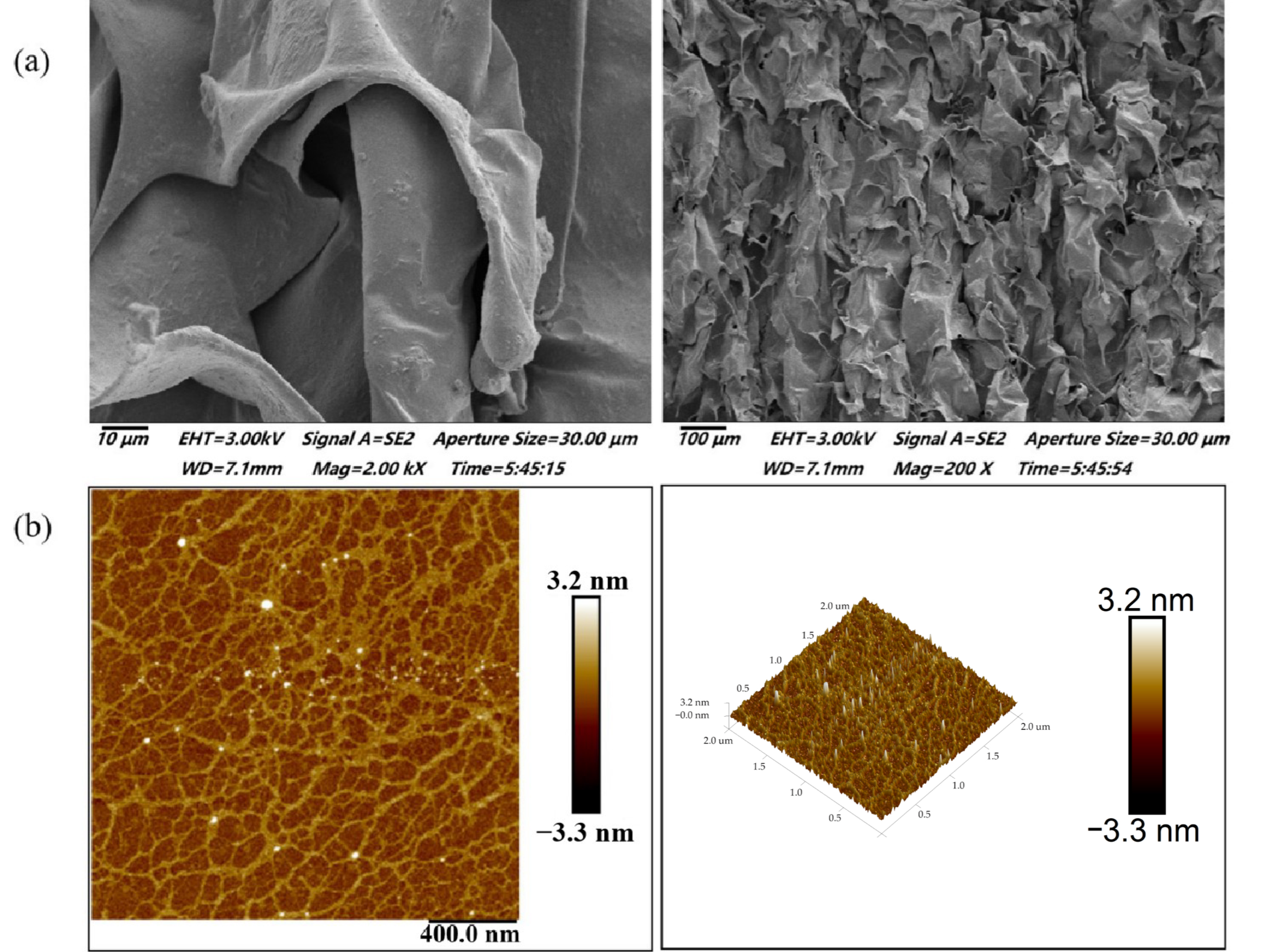

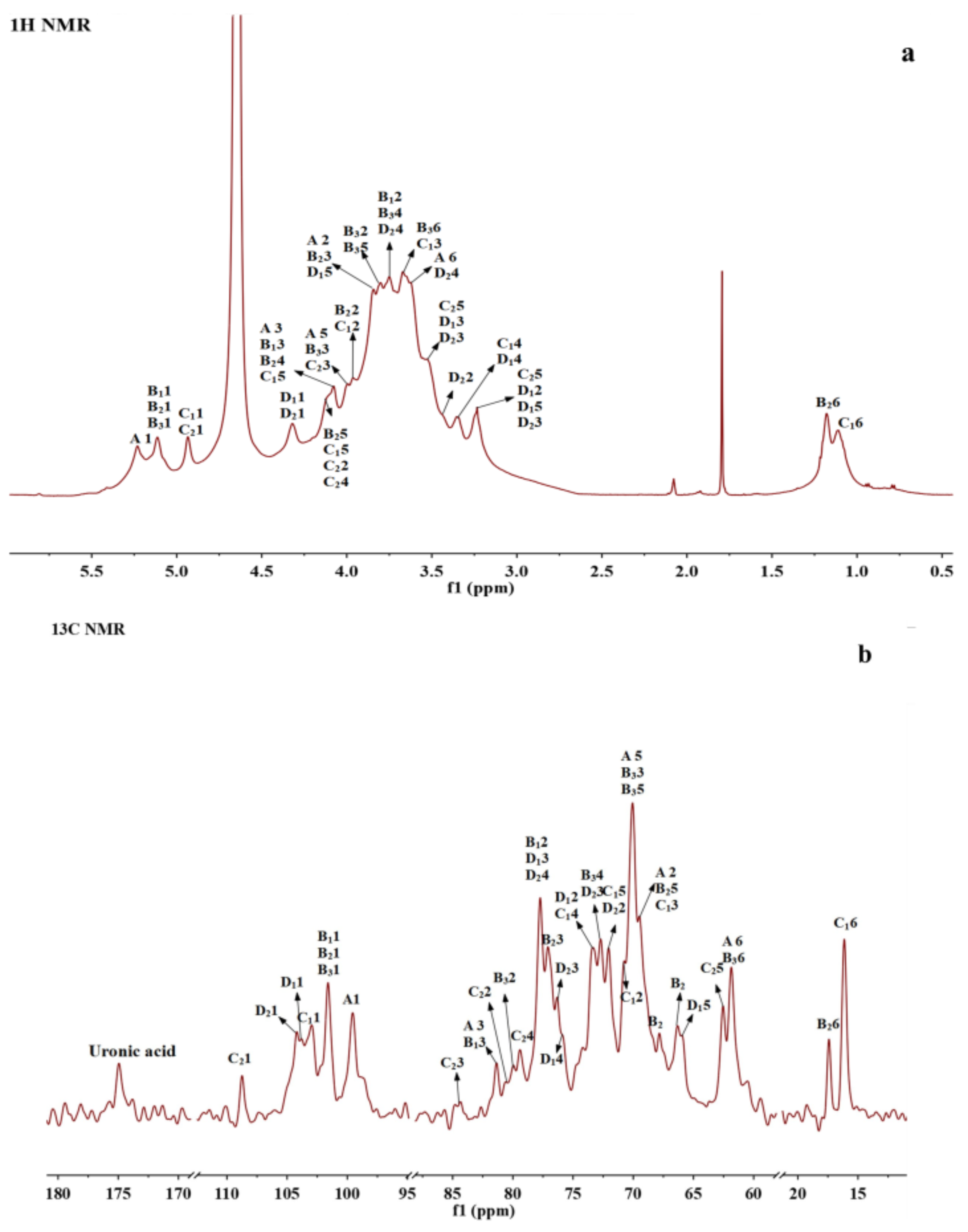
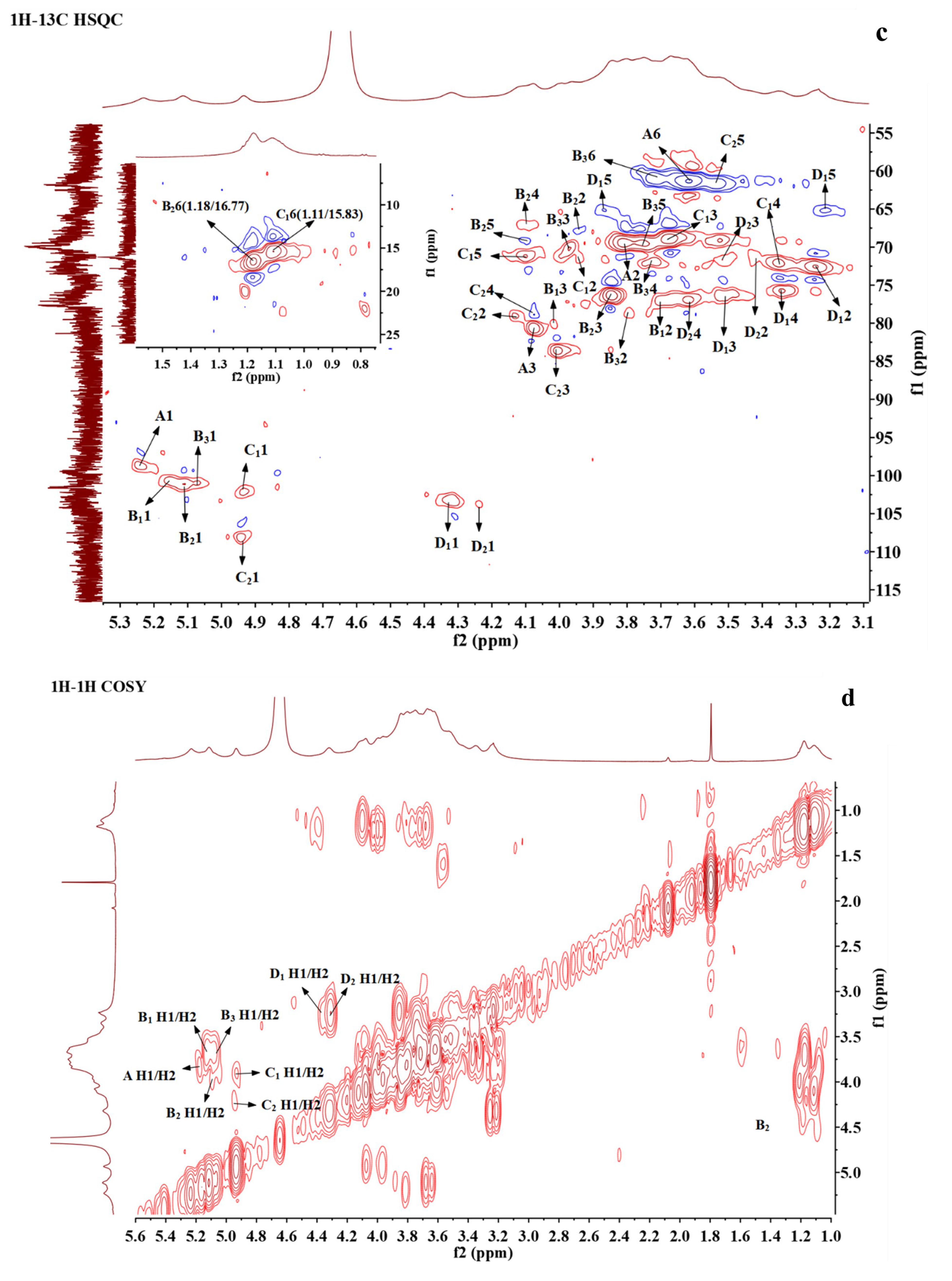
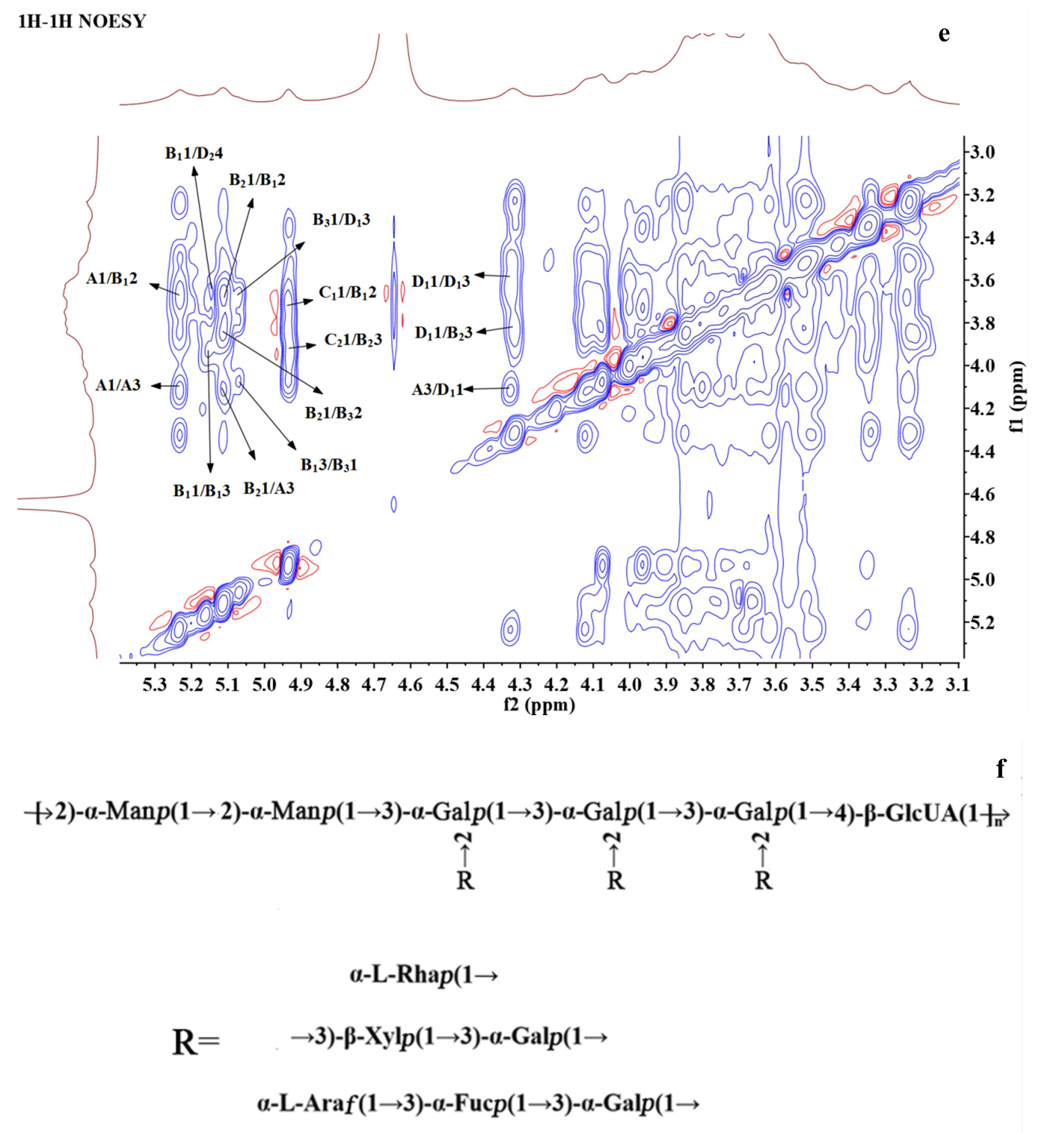
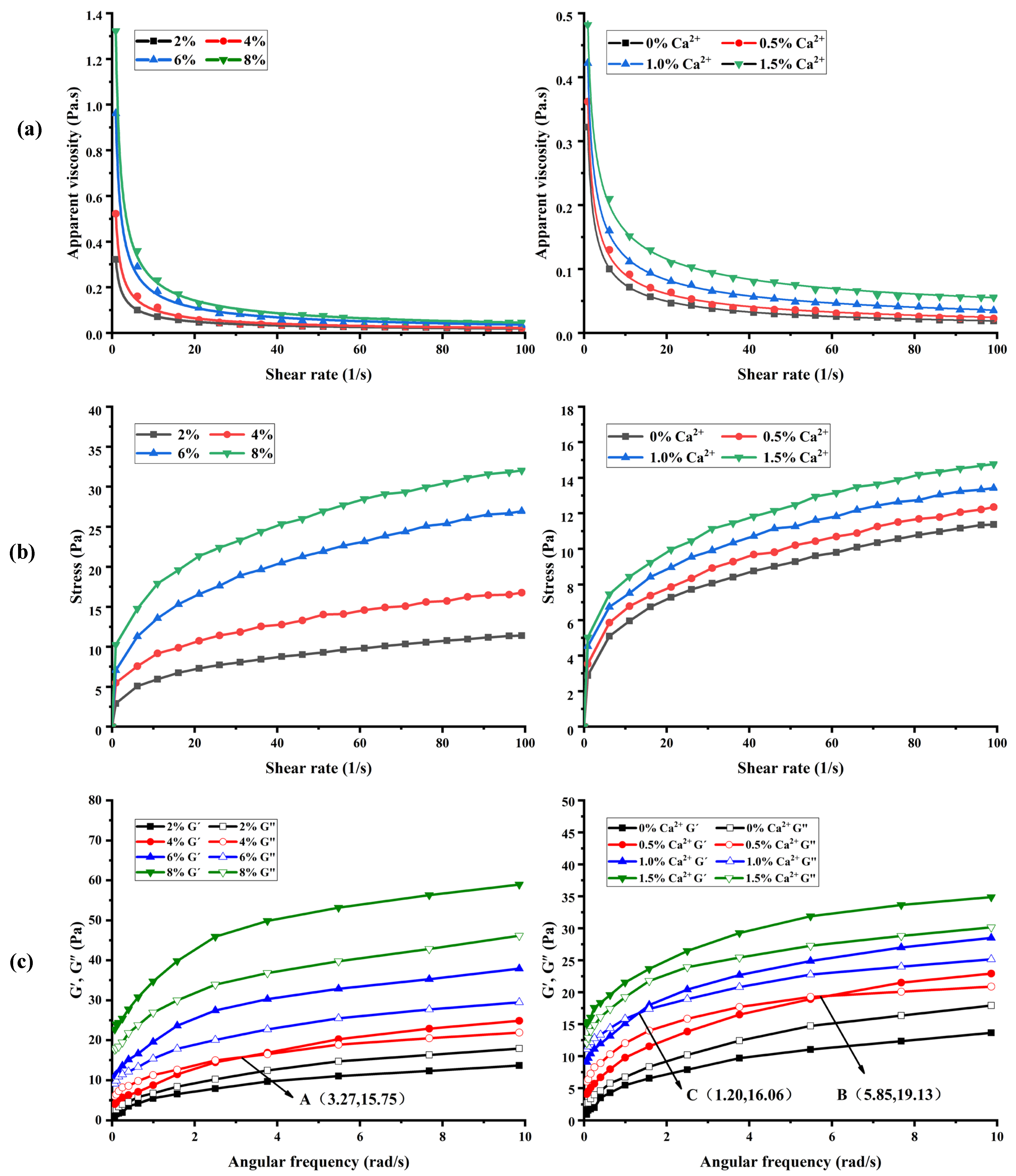
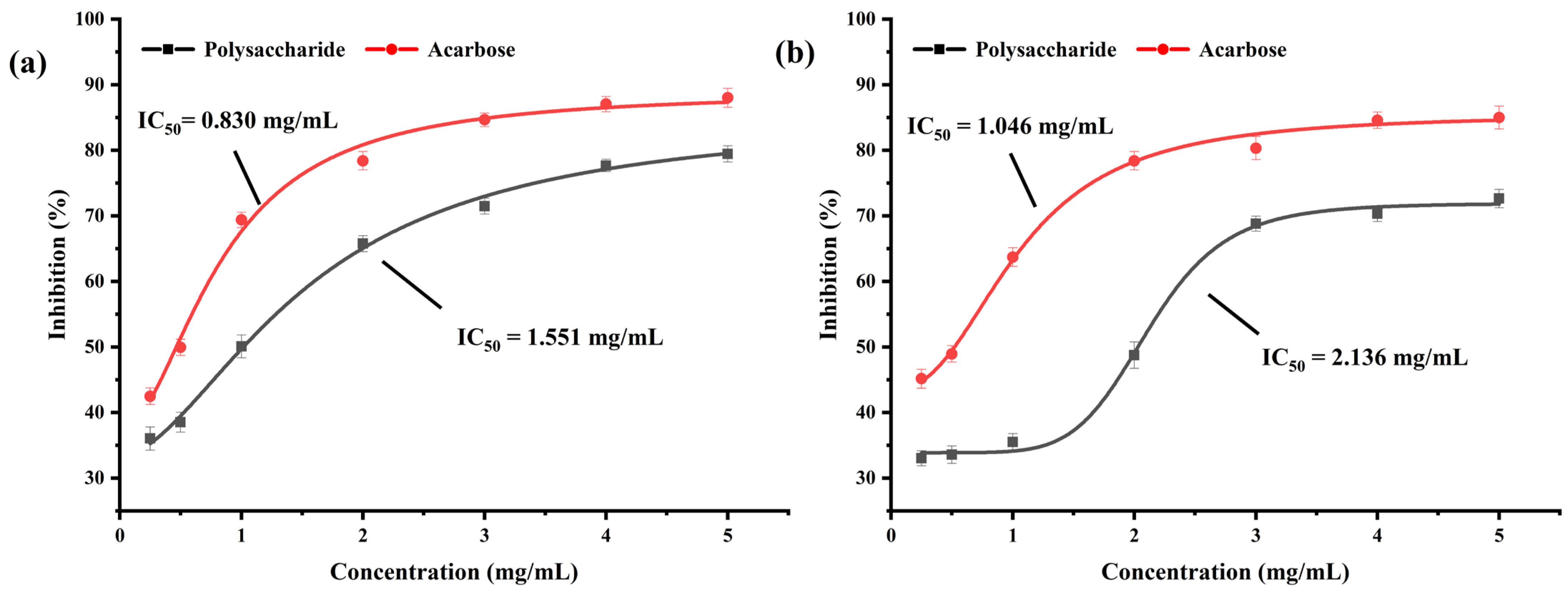
| Sample | Monosaccharide Composition (% m/m) | ||||||
|---|---|---|---|---|---|---|---|
| Man | Rha | GlcA | Gal | Xyl | Ara | Fuc | |
| S-1 | 3.04 | 10.99 | - | 19.41 | - | 18.24 | 48.31 |
| S-2 | 2.00 | 13.24 | - | 25.95 | 4.28 | 12.34 | 42.19 |
| S-3 | 2.06 | 5.58 | - | 55.89 | 15.03 | - | 21.44 |
| S-4 | 26.87 | - | 15.28 | 57.85 | - | - | - |
| P-4 | 51.37 | - | 28.48 | 20.15 | - | - | - |
| Methylated Alditol Acetate | Linkage Type | Main MS (m/z) | Molar Ratio (100%) |
|---|---|---|---|
| 1,4-Di-O-acetyl-1-deuterio-2,3,5-tri-O-methyl-D-arabinitol | α-L-Araf-(1→ | 101, 117, 161 | 1.01 |
| 1,5-Di-O-acetyl-1-deuterio-6-deoxy-2,3,4-Tri-O-methyl-L-mannitol | α-L-Rhap-(1→ | 101, 117, 131, 145, 161, 173 | 8.26 |
| 1,3,5-Tri-O-acetyl-1-deuterio-2,4-di-O-methyl-D-xylitol | →3)-Xylp-(1→ | 101, 117, 129, 161, 173, 189 | 9.43 |
| 1,3,5-Tri-O-acetyl-1-deuterio-6-deoxy-2,4-di-O-methyl-L-galactitol | →3)-Fucp-(1→ | 101, 117, 131, 155, 161, 207, 233 | 25.47 |
| 1,3,5-Tri-O-acetyl-1-deuterio-2,4,6-tri-O-methyl-D-galactitol | →3)-Galp-(1→ | 101, 117, 129, 161, 173, 233 | 17.24 |
| 1,2,5-Tri-O-acetyl-1-deuterio-3,4,6-tri-O-methyl-D-mannitol | →2)-Manp-(1→ | 101, 129, 161, 190 | 15.02 |
| 1,2,3,5-Tetra-O-acetyl-1-deuterio-4,6-di-O-methyl-D-galactitol | →2,3)-Galp-(1→ | 101, 117, 129, 145, 161, 189, 233 | 23.57 |
| Residue | H1/C1 | H2/C2 | H3/C3 | H4/C4 | H5/C5 | H6/C6 |
|---|---|---|---|---|---|---|
| A →3)-α-D-Galp (1→ | 5.23/98.75 | 3.82/69.31 | 4.08/80.75 | - | 4.03/70.60 | 3.62/61.07 |
| B1 →2,3)-α-D-Galp (1→ | 5.15/100.75 | 3.71/77.13 | 4.04/80.05 | - | - | - |
| B2 →3)-α-D-Fucp (1→ | 5.10/101.03 | 3.96/69.75 | 3.85/76.50 | 4.10/67.12 | 4.11/69.16 | 1.18/16.77 |
| B3 →2)-α-D-Manp (1→ | 5.07/100.93 | 3.78/78.90 | 3.97/70.24 | 3.72/71.91 | 3.80/70.01 | 3.72/61.30 |
| C1 T-α-L-Rhap | 4.94/102.31 | 3.95/70.78 | 3.68/68.88 | 3.35/72.01 | 4.11/71.16 | 1.11/15.83 |
| C2 T-α-L-Araf | 4.93/108.19 | 4.13/79.18 | 4.01/83.57 | 4.10/80.75 | 3.55/61.84 | |
| D1 →3)-β-D-Xylp (1→ | 4.32/103.39 | 3.25/75.66 | 3.62/76.93 | 3.35/75.56 | 3.87(3.22)/65.18 | |
| D2 →4)-β-D-GlcA (1→ | 4.24/103.98 | 3.42/71.41 | 3.53/76.29 | 3.69/77.14 | - | -/175.00 |
| Concentration | n | R2 | |
|---|---|---|---|
| BSP | 2% | 0.2975 ± 0.002 a | 0.9980 |
| 4% | 0.2646 ± 0.003 b | 0.8933 | |
| 6% | 0.2178 ± 0.004 c | 0.8865 | |
| 8% | 0.1748 ± 0.003 d | 0.8610 | |
| Ca2+ | 0.0% | 0.2975 ± 0.002 a | 0.9980 |
| 0.5% | 0.2741 ± 0.001 b | 0.9983 | |
| 1.0% | 0.2507 ± 0.002 c | 0.9970 | |
| 1.5% | 0.2477 ± 0.002 d | 0.9975 | |
| Concentration | Hardness (N) | Springiness | Adhesiveness (N·S) | Cohesiveness | Chewiness (N) | |
|---|---|---|---|---|---|---|
| BSP | 2% | 13.51 ± 0.03 d | 0.41 ± 0.02 d | 18.09 ± 0.05 d | 0.75 ± 0.01 c | 4.15 ± 0.03 d |
| 4% | 16.23 ± 0.05 c | 0.54 ± 0.01 c | 25.37 ± 0.03 c | 0.78 ± 0.02 c | 6.84 ± 0.03 c | |
| 6% | 21.18 ± 0.05 b | 0.68 ± 0.03 b | 31.52 ± 0.04 b | 0.83 ± 0.02 b | 11.95 ± 0.04 b | |
| 8% | 28.26 ± 0.04 a | 0.82 ± 0.02 a | 36.25 ± 0.05 a | 0.87 ± 0.01 a | 20.16 ± 0.03 a | |
| Ca2+ | 0.0% | 13.51 ± 0.03 d | 0.41 ± 0.02 d | 18.09 ± 0.05 d | 0.75 ± 0.01 c | 4.15 ± 0.03 d |
| 0.5% | 15.72 ± 0.04 c | 0.46 ± 0.02 c | 19.86 ± 0.04 c | 0.76 ± 0.02 c | 5.50 ± 0.02 c | |
| 1.0% | 18.43 ± 0.05 b | 0.50 ± 0.03 b | 21.74 ± 0.03 b | 0.78 ± 0.01 b | 7.19 ± 0.03 b | |
| 1.5% | 20.29 ± 0.03 a | 0.53 ± 0.02 a | 23.13 ± 0.05 a | 0.80 ± 0.02 a | 8.60 ± 0.03 a | |
Disclaimer/Publisher’s Note: The statements, opinions and data contained in all publications are solely those of the individual author(s) and contributor(s) and not of MDPI and/or the editor(s). MDPI and/or the editor(s) disclaim responsibility for any injury to people or property resulting from any ideas, methods, instructions or products referred to in the content. |
© 2025 by the authors. Licensee MDPI, Basel, Switzerland. This article is an open access article distributed under the terms and conditions of the Creative Commons Attribution (CC BY) license (https://creativecommons.org/licenses/by/4.0/).
Share and Cite
Jia, Z.; Chen, Y.; Niu, C.; Xu, Y.; Chen, Y. Structural Characterization, Rheology, Texture, and Potential Hypoglycemic Effect of Polysaccharides from Brasenia schreberi. Foods 2025, 14, 1836. https://doi.org/10.3390/foods14101836
Jia Z, Chen Y, Niu C, Xu Y, Chen Y. Structural Characterization, Rheology, Texture, and Potential Hypoglycemic Effect of Polysaccharides from Brasenia schreberi. Foods. 2025; 14(10):1836. https://doi.org/10.3390/foods14101836
Chicago/Turabian StyleJia, Zhangli, Yin Chen, Chunyu Niu, Yan Xu, and Yan Chen. 2025. "Structural Characterization, Rheology, Texture, and Potential Hypoglycemic Effect of Polysaccharides from Brasenia schreberi" Foods 14, no. 10: 1836. https://doi.org/10.3390/foods14101836
APA StyleJia, Z., Chen, Y., Niu, C., Xu, Y., & Chen, Y. (2025). Structural Characterization, Rheology, Texture, and Potential Hypoglycemic Effect of Polysaccharides from Brasenia schreberi. Foods, 14(10), 1836. https://doi.org/10.3390/foods14101836






